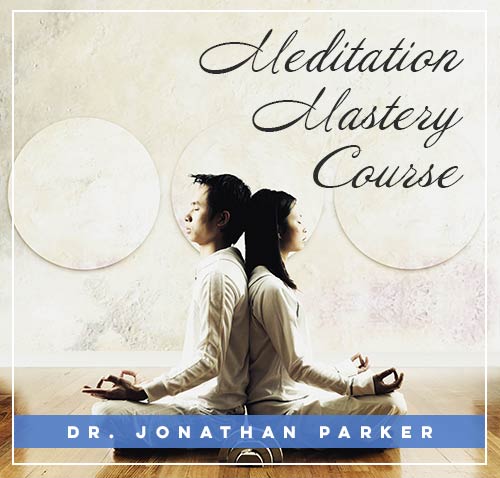Importance of Posture in Meditation

Looking for more amazing products? Check out our online store and explore our collection here! Happy shopping!
Before diving in, please note: This post is for informational purposes only. If you’d like to know more about how we approach topics, feel free to check out our friendly Disclaimer Page.
Hey there, amazing readers! 
We’re committed to delivering quality posts, and your support (even just sticking around despite the ads) means everything to us. So, bear with us, and thanks for helping us keep the good vibes rolling. Now, on to the fun stuff!
TRANSLATE BUTTON AT THE END OF THE ARTICLE
Understanding the Role of Posture in Meditation
When we think of meditation, the image of a serene individual sitting cross-legged in perfect posture often comes to mind.
But why is posture so crucial in the practice of meditation?
Posture plays a vital role in meditation as it directly impacts our physical alignment, mental focus, breath control, and overall experience during meditation sessions.
The way we hold our bodies influences the way we breathe, the way we think, and the way we feel.
Therefore, understanding the importance of posture in meditation is essential for anyone looking to deepen their practice and reap its full benefits.
Physical Alignment and Mental Focus
Proper posture in meditation ensures that the spine is erect, allowing for optimal alignment of the body.
When the spine is straight, energy flows freely throughout the body, promoting a sense of balance and stability.
This physical alignment not only prevents discomfort and distractions during meditation but also enhances mental focus.
By sitting in a posture that supports an upright spine, practitioners can maintain a heightened level of awareness and concentration, enabling them to delve deeper into their meditation practice with clarity and ease.
Benefits of Proper Posture in Meditation
The benefits of maintaining proper posture in meditation are manifold.
From reducing physical tension and promoting relaxation to improving circulation and enhancing alertness, the advantages are numerous.
Proper posture also helps in preventing the onset of aches and pains that can arise from sitting in uncomfortable positions for extended periods.
Additionally, by aligning the body correctly, practitioners can experience a greater sense of grounding and connection to the present moment, allowing for a more profound and enriching meditation experience.
How Posture Affects Breath Control
Posture and breath are intimately connected in the practice of meditation.
The way we hold our bodies directly impacts the way we breathe, and vice versa.
By sitting in a posture that supports optimal breathing, practitioners can harness the power of their breath to deepen their meditation practice.
Proper posture allows for unrestricted diaphragmatic breathing, which can help calm the mind, reduce stress, and enhance overall well-being.
By focusing on maintaining a stable and open posture, individuals can cultivate greater breath control, leading to a more profound and transformative meditation experience.
Maintaining Comfort and Stability
One of the key reasons why posture is essential in meditation is to ensure comfort and stability throughout the practice.
By sitting in a posture that is both comfortable and stable, practitioners can avoid unnecessary fidgeting or discomfort that may arise from poor alignment.
Finding a posture that works for your body and allows you to sit comfortably for an extended period is crucial in establishing a regular meditation practice.
When the body is at ease, the mind can settle more readily, paving the way for a deeper and more focused meditation experience.
Preventing Discomfort and Distractions
Improper posture in meditation can lead to discomfort and distractions that hinder the practice.
Slouching or leaning to one side can create tension in the body, causing aches and pains that draw attention away from the present moment.
By maintaining proper posture, practitioners can prevent these discomforts and distractions, allowing for a more immersive and rewarding meditation experience.
A stable and aligned posture supports the body in remaining relaxed and at ease, enabling the mind to focus on the practice of meditation without being pulled away by physical sensations.
Achieving a Deeper Meditative State
Proper posture is crucial for achieving a deeper meditative state.
When the body is aligned correctly, energy can flow freely, promoting a sense of calm and inner peace.
This physical alignment creates a strong foundation for the mind to settle into a state of deep concentration and mindfulness.
By sitting with an upright spine and open chest, practitioners can access a profound sense of stillness and tranquility that allows for a more profound and transformative meditation experience.
The role of posture in meditation cannot be overstated when it comes to reaching deeper states of awareness and insight.
Posture as a Foundation for Mindfulness
Posture serves as the foundation for mindfulness in meditation practice.
By sitting with intention and awareness, practitioners can cultivate a sense of mindfulness that extends beyond the cushion and into everyday life.
Proper posture encourages individuals to be present in the moment, fully embodying the practice of meditation with each breath and each movement.
Mindful posture not only supports the body during meditation but also trains the mind to be more attentive and aware in all aspects of life.
By establishing a strong foundation through posture, individuals can deepen their mindfulness practice and experience greater clarity and peace.
Enhancing Mind-Body Connection
The way we hold our bodies in meditation directly impacts our mind-body connection.
Proper posture allows for a harmonious alignment of the physical body, promoting a sense of unity and integration between the body and mind.
By sitting with awareness and intention, practitioners can cultivate a deeper connection to their physical sensations, thoughts, and emotions.
This enhanced mind-body connection fosters a greater sense of self-awareness and self-compassion, leading to a more profound and transformative meditation experience.
Through mindful posture, individuals can strengthen the bond between their body and mind, facilitating a deeper sense of well-being and inner harmony.
Improving Concentration and Awareness
Maintaining proper posture in meditation is essential for improving concentration and awareness.
By sitting with a straight spine and relaxed body, practitioners can focus their attention more effectively on the present moment.
Proper posture supports a clear and alert mind, helping individuals stay engaged in the practice of meditation without being pulled away by distractions.
Enhanced concentration and awareness cultivated through proper posture lead to a deeper understanding of the mind and a greater capacity for self-discovery.
By prioritizing posture in meditation, individuals can sharpen their mental faculties and heighten their sense of awareness, opening the door to profound insights and transformative experiences.
Correcting Common Postural Mistakes
In the practice of meditation, several common postural mistakes can hinder the quality of the practice.
Slouching, crossing the legs too tightly, or collapsing the chest are some of the errors that can lead to discomfort and distraction during meditation.
To correct these mistakes, practitioners should focus on sitting with an upright spine, relaxed shoulders, and an open chest.
Keeping the chin slightly tucked and the gaze soft can also help maintain proper alignment and prevent strain on the neck and shoulders.
By being mindful of these common postural mistakes and making adjustments as needed, individuals can ensure a more comfortable and effective meditation practice.
Tips for Developing a Strong Meditation Posture
Developing a strong meditation posture requires practice and awareness.
Here are some tips to help practitioners establish a solid foundation for their meditation practice:
Find a comfortable cushion or chair that supports an upright spine and allows for relaxed sitting.
Sit with your legs crossed comfortably or on a chair with your feet flat on the ground.
Align your head, neck, and spine in a straight line to promote good posture.
Relax your shoulders and place your hands on your lap or knees.
Close your eyes or gaze softly ahead to minimize distractions.
Breathe deeply and consciously, focusing on the sensation of each breath.
Maintain a sense of ease and relaxation in your body while staying alert and attentive.
If discomfort arises, make subtle adjustments to your posture without losing focus.
Practice mindfulness of your posture throughout the meditation session to ensure alignment.
Gradually increase the duration of your meditation practice while maintaining a strong and stable posture.
By incorporating these tips into your meditation practice, you can develop a strong posture that supports deep concentration, mindfulness, and self-awareness, leading to a more profound and transformative meditation experience.
Conclusion
The importance of posture in meditation cannot be overstated.
Proper alignment of the body supports mental focus, breath control, comfort, stability, and overall well-being during meditation practice.
By understanding the role of posture in meditation and making a conscious effort to maintain a strong and stable posture, practitioners can enhance their meditation experience and deepen their practice.
Through mindful posture, individuals can cultivate a greater sense of awareness, concentration, and connection between the body and mind, leading to profound insights and transformative experiences.
Prioritizing posture in meditation is key to unlocking the full benefits of this ancient practice and fostering a deeper sense of inner peace and well-being.

The Enlightenment Journey is a remarkable collection of writings authored by a distinguished group of experts in the fields of spirituality, new age, and esoteric knowledge.
This anthology features a diverse assembly of well-experienced authors who bring their profound insights and credible perspectives to the forefront.
Each contributor possesses a wealth of knowledge and wisdom, making them authorities in their respective domains.
Together, they offer readers a transformative journey into the realms of spiritual growth, self-discovery, and esoteric enlightenment.
The Enlightenment Journey is a testament to the collective expertise of these luminaries, providing readers with a rich tapestry of ideas and information to illuminate their spiritual path.
Our Diverse Expertise
While our primary focus is on spirituality and esotericism, we are equally passionate about exploring a wide range of other topics and niches 

To ensure we provide the most accurate and valuable insights, we collaborate with trusted experts in their respective domains 
Our blog originally focused on spirituality and metaphysics, but we’ve since expanded to cover a wide range of niches. Don’t worry—we continue to publish a lot of articles on spirituality! Frequently visit our blog to explore our diverse content and stay tuned for more insightful reads.
Hey there, amazing reader! 
Check out our store here and take a peek at some of our featured products below! Thanks for being awesome!











